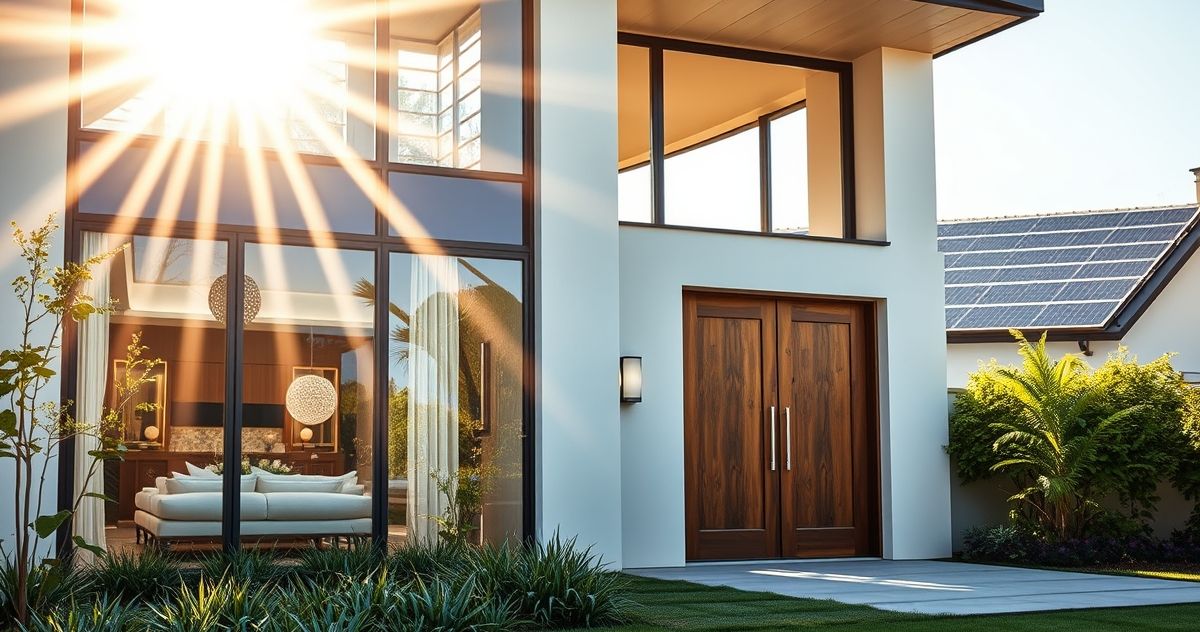Understanding the Energy-Efficient Windows and Doors Credit
The Energy-Efficient Windows and Doors Credit is a tax incentive designed to encourage homeowners to invest in energy efficiency upgrades. By installing energy-efficient windows and doors, homeowners can not only reduce their energy bills but potentially qualify for a tax credit, making these eco-friendly upgrades more financially accessible.
What It Is and Its Primary Purpose
The primary purpose of this tax credit is to promote energy conservation by incentivizing homeowners to use energy-efficient building products. Qualifying products typically meet or exceed established energy performance criteria, often certified by Environmental Protection Agency’s (EPA) ENERGY STAR program. The goal is to reduce overall energy consumption, lower greenhouse gas emissions, and encourage sustainable home improvement practices.
Key Features or Components
- Eligibility: To qualify, the products installed must meet specific energy efficiency standards. These standards ensure that the energy savings are significant enough to justify the tax credit. The windows and doors generally need to be installed in the homeowner’s principal residence.
- Credit Amount: The tax credit typically covers a percentage of the cost of new windows and doors, up to a specific limit. This allows homeowners to recover part of their investment through tax savings.
- Non-Business Property: This credit applies only to non-business, residential properties. It’s designed to incentivize personal homeowners rather than commercial property owners.
Relevant Filing or Compliance Requirements
Claiming the Energy-Efficient Windows and Doors Credit requires homeowners to adhere to several filing requirements:
- Documentation: Homeowners must retain invoices and proof of purchase, alongside the manufacturer’s certification statement that verifies the product’s energy-efficient status.
- Tax Forms: The claim is made using IRS Form 5695, specifically designated for Residential Energy Credits. This form requires accurate reporting of the costs associated with the qualifying improvements.
- Filing Deadline: Like other tax credits, this must be claimed in the tax year in which the installation occurs, with appropriate documentation included in the annual tax return.
Penalties or Consequences for Non-Compliance
Failure to properly document and claim the credit can result in denial of the claimed amount, potentially leading to an adjustment in the taxpayer’s financial liability with possible penalties or interest for incorrect filings. Non-compliance might draw additional scrutiny, resulting in further IRS inquiries or audits that can complicate a taxpayer’s financial situation.
Significance in Tax Resolution and General Financial Compliance
The Energy-Efficient Windows and Doors Credit plays a vital role in promoting tax relief associated with green technology adoption. By leveraging this credit, taxpayers contribute to environmental conservation while benefiting financially from their investments. Additionally, this credit can serve as a strategic component of tax planning, offering a way to lower taxable income and align with broader financial goals regarding personal home investments and sustainability. As regulatory bodies continue to prioritize environmental initiatives, credits like these are expected to grow in importance, reinforcing their significance in future financial and tax planning strategies.
In conclusion, the Energy-Efficient Windows and Doors Credit offers dual benefits: encouraging eco-friendly home upgrades and providing financial incentives to recoup part of the installation’s costs. As energy efficiency becomes an increasing priority, understanding and utilizing this tax credit can offer tangible benefits for both individual financial health and environmental conservation efforts.

